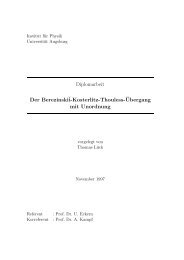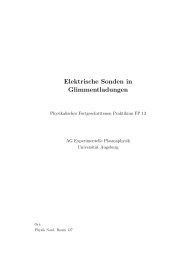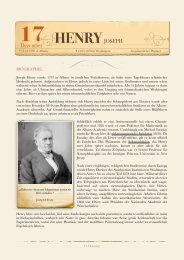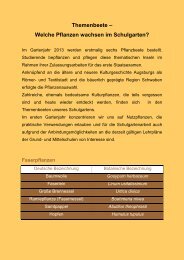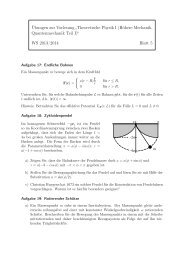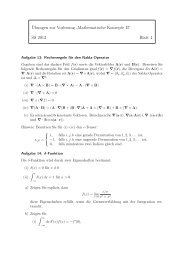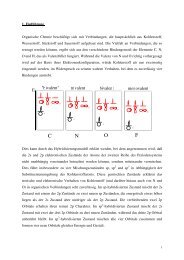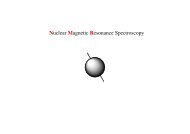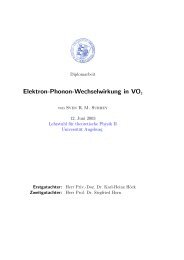Numerical Renormalization Group Calculations for Impurity ...
Numerical Renormalization Group Calculations for Impurity ...
Numerical Renormalization Group Calculations for Impurity ...
Create successful ePaper yourself
Turn your PDF publications into a flip-book with our unique Google optimized e-Paper software.
2.3. <strong>Impurity</strong> quantum phase transitions 13<br />
usual (Ingersent and Si 2002, Vojta 2006):<br />
M loc (g < g c , T = 0, h → 0) ∝ (g c − g) β ,<br />
χ loc (g > g c , T = 0) ∝ (g − g c ) γ ,<br />
M loc (g = g c , T = 0) ∝ |h| 1/δ ,<br />
χ loc (g = g c , T) ∝ T −x ,<br />
χ ′′<br />
loc (g = g c, T = 0, ω) ∝ |ω| −y sgn(ω). (2.49)<br />
The last equation describes the dynamical scaling of the local susceptibility.<br />
In the absence of a dangerously irrelevant variable, there are only two independent<br />
exponents. The scaling <strong>for</strong>m in Eq. (2.47) allows to derive hyper-scaling<br />
relations:<br />
β = γ 1 − x<br />
1 + x<br />
, 2β + γ = ν, δ =<br />
2x 1 − x . (2.50)<br />
Furthermore, hyper-scaling also implies x = y. This is equivalent to so-called ω/T<br />
scaling in the dynamical behavior-<strong>for</strong> instance, the local dynamic susceptibility<br />
will obey the full scaling <strong>for</strong>m (Sachdev 1999),<br />
χ ′′<br />
loc (ω, T) = B ( )<br />
1 ω<br />
ω Φ 1−ηχ 1<br />
T , T 1/ν<br />
, (2.51)<br />
g − g c<br />
which describes critical local-moment fluctuations, and the local static susceptibility<br />
follows<br />
χ ′′<br />
loc(T) = B ( )<br />
2 T<br />
1/ν<br />
ω Φ 1−ηχ 2 . (2.52)<br />
g − g c<br />
Here, η χ = 1 − x is a universal anomalous exponent, and Φ 1,2 are universal<br />
crossover functions (<strong>for</strong> the specific critical fixed point), whereas B 1,2 are nonuniversal<br />
prefactors.



